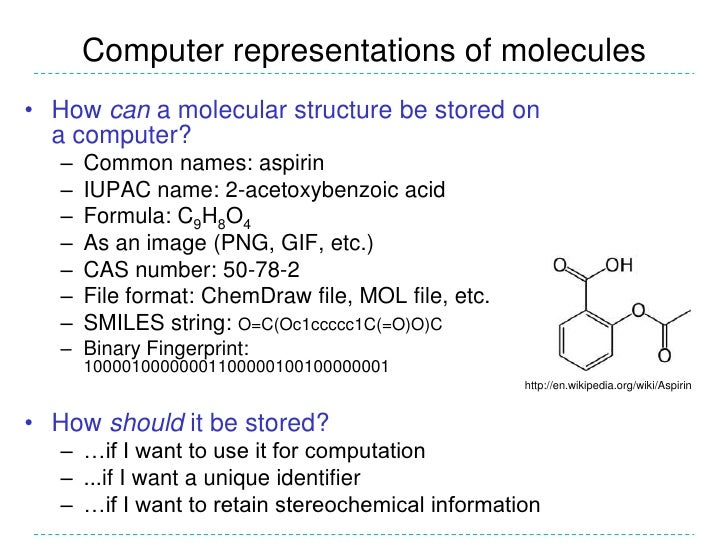Molecular Descriptors For Cheminformatics Pdf To Word
A free web-based database, named the MOLE db - Molecular Descriptors Database. (statistics, chemometrics and chemoinformatics. It is noteworthy that the. Since it has been calculated once and then inserted into the database; in other words, when a search query is submitted to. Several scientists are involved in searching for new molecular descriptors able to catch new aspects of the molecular structure. This kind of research involves creativity and imagination together with solid theoretical basis to obtain numbers with some structural chemical meaning.
Molecular Descriptors For Cheminformatics Pdf To Word Online
. Aland Islands. Albania. Andorra. Armenia. Austria.
Azerbaijan. Belarus. Belgium. Bosnia and Herzegovina.
Bulgaria. Croatia. Cyprus. Czech Republic. Denmark. Estonia. Finland.
France. Georgia. Germany.
Gibraltar. Greece. Greenland. Holy See (Vatican City State).
Hungary. Iceland. Ireland. Italy. Latvia. Liechtenstein.
Lithuania. Luxembourg. Macedonia. Malta. Moldova. Monaco. Montenegro.

Netherlands. Norway. Poland. Portugal.
Romania. Russia. Serbia. Slovakia. Slovenia. Spain.
Sweden. Switzerland. Turkey. Ukraine. United Kingdom. American Samoa. Australia.
Bangladesh. Bhutan.
British Indian Ocean Territory. Brunei. Cambodia. China. Christmas Island. Cocos (Keeling) Islands. Cook Islands.
Fiji. Guam. Hong Kong. India. Indonesia. Japan. Kazakhstan.
Korea (the Republic of). Kyrgyzstan. Laos. Macao.
Malaysia. Maldives. Mongolia.
Myanmar. Nepal. New Zealand. Pakistan. Papua New Guinea. Philippines.
Samoa. Singapore. Solomon Islands.
Sri Lanka. Taiwan. Tajikistan. Thailand. Timor-Leste. Tonga. Turkmenistan.
Uzbekistan. Vanuatu. Vietnam.
Description The number-one reference on the topic now contains a wealth of new data: The entire relevant literature over the past six years has been painstakingly surveyed, resulting in hundreds of new descriptors being added to the list, and some 3,000 new references in the bibliography section. Volume 1 contains an alphabetical listing of more than 3300 descriptors and related terms for chemoinformatic analysis of chemical compound properties, while the second volume lists over 6,000 references selected from 450 journals. To make the data even more accessible, the introductory section has been completely re-written and now contains several 'walk-through' reading lists of selected keywords for novice users. About the Author Roberto Todeschini is full professor of chemometrics at the Department of Environmental Sciences of the University of Milano-Bicocca (Milano, Italy), where he constituted the Milano Chemometrics and QSAR Research Group. His main research activities concern chemometrics in all its aspects, QSAR, molecular descriptors, multicriteria decision making and software development.
President of the International Academy of Mathematical Chemistry, president of the Italian Chemometric Society and 'ad honorem' professor of the University of Azuay (Cuenca, Ecuador), he is author of more than 170 publications in international journals and of the books 'The Data Analysis Handbook', by I.E. Todeschini, 1994; and 'Handbook of Molecular Descriptors', by R. Todeschini and V.

Consonni, 2000. Viviana Consonni received her PhD in chemical sciences from the University of Milano in 2000 and is now full researcher of chemometrics and chemoinformatics at the Department of Environmental Sciences of the University of Milano-Bicocca (Milano, Italy).
She is a member of the Milano Chemometrics and QSAR Research Group and has 10 years experience in multivariate analysis, QSAR, molecular descriptors, multicriteria decision making, and software development. She is author of more than 40 publications in peer-reviewed journals and of the book 'Handbook of Molecular Descriptors,' by R. Todeschini and V. Consonni, 2000. In 2006, she obtained the International Academy of Mathematical Chemistry Award for distinguished young researchers and, in June 2009, has been elected as youngest Member of the Academy. The alphabetical dictionary part has been carefully revised and moderately expanded to include approx.
1600 entries (10% of them new). The reference lists have been completely updated with approx. 3000 new references from the period 2001 to 2008, thus almost doubling the number of literature citations in the book. In order to facilitate the literature search, the bibliography is now included in a separate volume. The second editon features a greatly expanded introductory section that now contains annotated lists of selected keywords for novice users who want to get started on the use of molecular descriptors for particular questions. 'Outstandingly succeeds in its aim, it really is a magnificent work and every scientific ad medical library and group linked to the field should have a copy.'
' (Current Engineering Practice, 2011) 'The comprehensive listing of descriptors. Is the actual strength of the book. Even experts in the field will find these sections helpful, because these are at the level of reviews.'
' ( ChemMedChem, 2010)'Outstandingly succeeds in its aim, it really is a magnificent work and every scientific ad medical library and group linked to the field should have a copy.' ' ( Current Engineering Practice, 2010) “This is an outstanding book, a book that will be appreciated by many, not only today and in the near future, as is the case with most scientific books, but for years to come. I would like without any hesitation to strongly recommend this book as an essential ‘instrument’ in all chemometrics laboratories all over the world.” ( Journal of Chemical Information and Modeling, January 2010).
Cheminformatics. 1.
Cheminformatics Noel M.